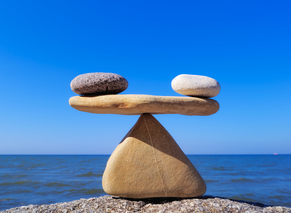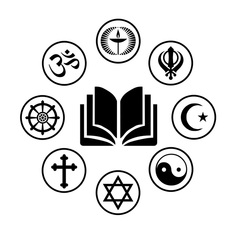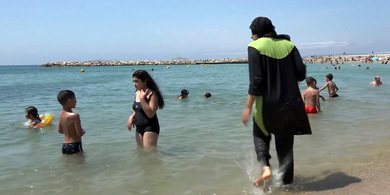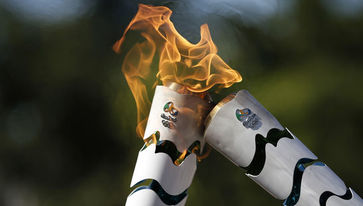
“I don’t like to talk about Islamic violence, because every day, when I read the newspaper, I see violence and read about an Italian who kills his fiancé or his mother- in-law. They are baptized Catholics. They are violent Catholics. If I speak of Islamic violence, then I have to speak of Catholic violence too”.
In spite of this many people still have a sneaking suspicion that Islam is violent at its core for after all wasn’t it spread by the sword?
This was one of the questions discussed at a recent colloquium on Islam organised by the Scottish Bishops’ Committee for Interreligious Dialogue and the Conforti Global Education Institute. Islam did spread rapidly and did so on the back of Arabic expansionism and empire building, as well as Arab commercial interests, much as Christianity did on the back of colonialism. Interactive maps showed the interplay between Christian and Muslim empires over the centuries and how the exhaustion of the Byzantine Empire had meant a welcome acceptance of Islam as a new and energetic religion. Presenters were to true to Hans Kung has a dictum that there will be no real dialogue between religions without an investigation into the foundations of the religion. Those who introduced the various topics covered by the colloquium: origins and expansion, sharia law, movements such as Salafism and the place of women in Islam did just that. They allowed us to see the idealism at the heart of Islam, the need to understand the context into which a religion is born and in which it develops, the difficulties of on-going interpretations as the religion rethinks its faith in the light of new historical and cultural contexts, the hardening of attitudes which were not present in its origins or in the teaching of its founders. The colloquium opened a window into the complexities and diversity within Islam and hopefully expelled misrepresentations, misunderstandings and even fears and suspicions that people are often not able to express.
Dianna Eck, Professor of Comparative Religion and Indian Studies at Harvard University, maintains that
“People of every religious tradition depend upon one another to interpret one another fairly and accurately”. We are the keepers of one another’s image. This is one of the most critical aspects of our interdependence and it is a sacred trust”.
To do this in the case of Islam is to stand in solidarity with our more moderate Islamic brothers and sisters who are anxious to maintain and witness to their Islamic identity while educating the world about its true meaning and practice. One way of doing this, I think, is to publicise the good things that happen in the Muslim world and Muslim attempts to reach out in friendship to other faiths.
Good things do happen and just this week there has been a report in the World Council of Churches newsletter of the opening of the International Centre for Inter-Faith Peace and Harmony (ICIPH) in Kaduna, Northern Nigeria, a region in which more than 20,000 people have died in interreligious violence over the last three decades. It is the most recent in a growing number of interfaith initiatives in Nigeria which are courageously battling the effects of Boko Haram. At the formal opening of the Centre Malam Nasir EL-Rufai, governor of Kaduna State, shared his experience of the way that religious leaders, both Christian and Muslim, sometimes speak and act in ways that hinder interreligious peace - a good reminder, not just to religious leaders but to all of us, that our words about one another can contribute to or hinder peacemaking in our own contexts.
The recent murder of ninety-two year old Fr Jacques Hamel in Rouen appalled all right minded people of all religions. The Bishops’ Committee received a number of letters of condolences. The latest one came this week from the Imam and President of the Central Mosque in Glasgow. The letter included this statement:
The Covenant of Prophet Muhammad (Peace Be Upon Him) in the 7th Century to the Christian Monks of Saint Catherine Monastery of Mount Sinai was a pioneering document. It promised freedom of worship, movement as well as security, protection and civic rights.
In a similar spirit, the Muslim Community pledges to work together with the Christian Community in the Abrahamic way of love and mutual understanding to build bridges and overcome the great challenges of our time.
The reference to the covenant that the Prophet Mohammed made with the monks of St Catherine’ Monastery in Sinai is an interesting one and a good example of how important it is to go back to the foundations of our faith as Hans Kung suggested. They give an insight into an Islam quite different from that perpetrated by extremist groups that are characterised more by intolerance than respect for one another’s faith and freedom of worship.
These are small steps but important ones none the less and there are many more like them but they don't get much publicity. Hopefully they sow the seeds of peace and strengthen the bonds of friendship which will grow and flourish so that the Kingdom of God will indeed be revealed in our midst.





 RSS Feed
RSS Feed
